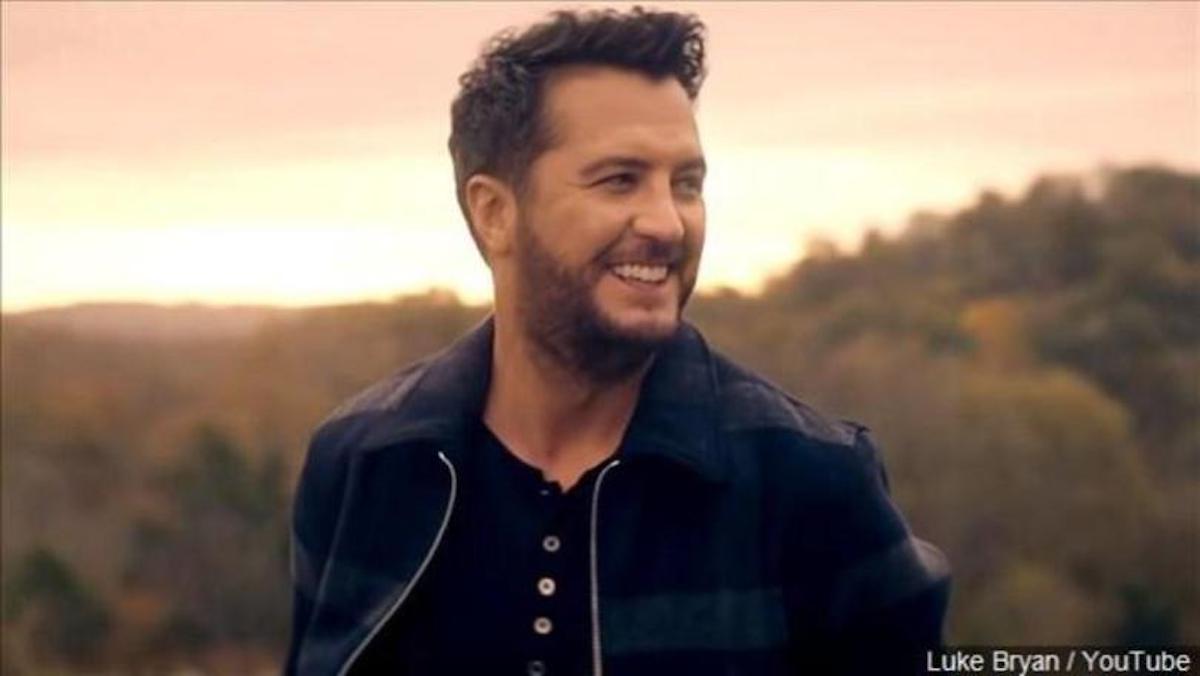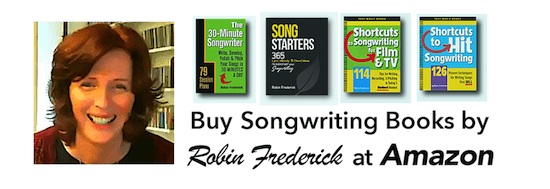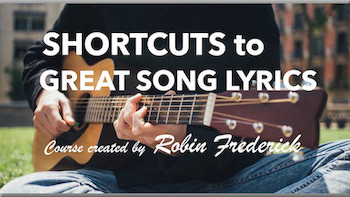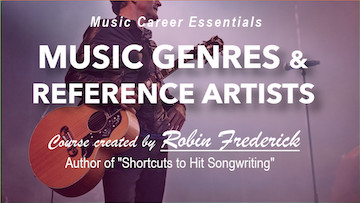
There are always a whole lotta party-all-night, feel-good songs on the Country music charts, especially in the summer. It’s a theme with tons of appeal for Country listeners.
The songwriting on all these hits is solid, of course, but, after a while you might start to notice a certain same-ness to the lyrics. They all seem to have pickup trucks, beer, and girls in shorts. So, wouldn’t it be cool if you could write a hit song with this commercially appealing theme and set yourself a little apart from the crowd? Let’s take a look at a Country hit that does exactly that.
“Play It Again,” a summertime hit recorded by Luke Bryan, has the required tailgate and girl in shorts but the song brings this girl to life in a way that’s vivid and believable. You get a real sense of both the singer’s character and the girl’s. The song plays out like a series of scenes, fun to watch and easy to get caught up in.
Artist: Luke Bryan
Writers: Dallas Davidson & Ashley Gorley
GENRE/STYLE
The genre is 100% pure Contemporary Country. The detailed story line and physical actions of the characters are clearly drawn. It all takes place within a classic Country setting of tailgates and outdoor summer fun.
The song creates a vivid mental movie that keeps listeners engaged. The insight into the singer’s feelings and the picture of the girl he’s attracted to add to the enjoyment. But to my mind, the youthful, engaging characters in this lyric are the real standout.
SONG STRUCTURE
The song structure is…
VERSE / PRE-CHORUS / CHORUS
VERSE / PRE-CHORUS / CHORUS
BRIDGE / CHORUS
I noticed that the verse is four lines long and so is the pre-chorus. And the lines in each are about the same length. It’s possible that this started out as a song with an opening double verse.
TIP: If you have a double verse at the top of your song and you want to build more anticipation going into your chorus, consider turning the second half into a pre-chorus with a rising melody line like this one.
THE PRE-CHORUS: The first pre-chorus starts with “Soon as I sat down…” The melody begins to rise here, reaching a peak at the start of the chorus. It’s a powerful build, adding energy as the song heads into the chorus.
THE CHORUS: The transition into the chorus (“She was like, Oh my God…”) happens a little earlier than we expect. The writers could have held out the last word of the pre-chorus for another measure but they jumped right into the chorus instead. This is a great way to keep momentum going. Try starting your chorus a little early to surprise your listeners and keep them involved in the song.
THE BRIDGE: The bridge consists of two quick, highly-focused lines that set up the final chorus. The lyric tells us the singer picks up his guitar and plays the song —a natural development that ties together the boy-meets-girl-meets-song storyline. It sounds so obvious but I’ll bet it took some work to get there when they wrote it!
LYRICS
Country is about the only genre where you still hear first-person/third-person lyrics, “I / she” or “I / he.” In these songs the singer tells the listener about something that happened between himself and another person: “I did this and she did that.” It’s more of a story-telling form than the in-the-moment situations of Pop and Rock lyrics.
To make this type of lyric work, you need to give listeners a vivid, fully-drawn picture of the person the singer is talking about so they can get involved in the story. Listeners need to be able to picture what’s going on. Here’s how this song does it…
We meet her. In the very first line, the song describes her:
She was sitting all alone over on the tailgate
Tan legs swingin’ by a Georgia plate
We hear her talk. In the first half of the chorus, the singer tells us what she says. In these lines we hear her voice and get a feel for her personality and enthusiasm, her youth and spontaneity.
She was like, “Oh my God, this is my song!
We’ve been listenin’ to the radio all night long
I can’t believe that it came back on, but here it is.
We see her actions. In the second half of the chorus, we see what she does, how she reacts to the music.
Before I said a word she was takin’ my hand,
Spinnin’ me around’ till it faded out
And she gave me a kiss
Notice that the verses give us a look at the singer’s feelings and actions while the choruses focus on the girl’s actions with a shared payoff at the end. (“And she said play it again… And I said play it again.”) There’s a very clear structure to the song lyric that gives it a nice sense of balance.
What you don’t find here are lines that make statements about how the singer feels: “I like her a lot.” or “She really gets to me.” Instead, the lyric shows us, in images and actions, the emotions, the situation, and the characters. It’s okay to include a few lines that tell us how the singer feels but be sure to back it up with “proof.” Show us why we should believe him.
You can apply these same techniques to “I / you” songs, as well. Try quoting the other person, “When you said…” so listeners hear the other person speak. Show the actions they take, decisions they make as well as the singer’s reactions.
Read more about using images and examples to get listeners involved.
A fresh view of a familiar situation
Guy sees pretty girl. Girl hears her favorite song on the radio and wants to dance. Kinda basic, right? One of the most wonderful things that songs can do is make us see familiar situations through a different lens and give them added emotional depth.
Country songs are particularly good at this. Buying a new truck, working a job, going out on a Saturday night, sharing time with family – these are all familiar Country themes yet they keep driving the hits that audiences love.
To take listeners deeper into these familiar situations, you have to go there first yourself. Discover new angles and emotions. Really live it in your imagination and wring everything out of it that you can. Staying on the surface won’t work for this level of writing.
TRY IT NOW
Pick a familiar situation between two people and describe it in images, actions, examples, and quotes. If you can’t think of a situation you want to write about, use a scene from a TV show or film. You can use “I / you” or “I / she (or he)” but don’t use more than two pronouns. Keep the focus tight and let listeners in on what the singer is feeling.
MELODY & CHORDS
Momentum and Phrase Patterns: The verse melody begins with a strong sense of momentum. You can hear this in the opening lines of the song: She was sittin’ all alone over on the tailgate / Tan legs swingin’ by a Georgia plate.
To hear how this works, try singing the first line the way it’s written, then sing it again without the word “over”: She was sittin’ all alone on the tailgate.
The word “over” kept the flow going and extended the line. You can try the same thing with the second line. Drop out the word “Georgia.” (It doesn’t make much sense without it but you’ll get the idea.)
Also notice that there’s only a short pause (one beat) between the first and second lines. This adds to the sense of forward momentum in the melody. The listener feels a nice boost of energy right from the opening lines.
But you really hear the momentum pick up in the following long line:
I was lookin’ for her boyfriend, thinkin’ no way she ain’t got one.
This is one long melodic thought, very conversational and natural. If you broke this up into two separate phrases with a pause between them it could start to sound stiff and awkward.
This pattern of phrase lengths (two shorter phrases then one long) is very comfortable for listeners. You hear it frequently in both Country and Pop hits. This song relies on it all the way through, in the verse, pre-chorus and chorus.
TRY IT NOW
Listen to the song again and see if you can pick out this pattern of two short and one long phrase in each section. Notice how the chorus adds one more line at the end of each pattern to break it up (“and here it is” “she gave me a kiss”). Try writing a few lyric lines with this pattern.
The Payoff line melody: This chorus has the wonderful hook/payoff line: “Play it again, play it again, play it again.” It’s catchy and easy to remember, and just the kind of thing these two characters would say!
The melody hits an unusual note here that’s not in the simple three-note chord that accompanies it (It’s the flat five of the chord). This is pretty unusual for a Country melody. It does grab attention, but use something like this sparingly and only after you’re very familiar with the Country genre. Too much of this and you could find yourself writing a song in a different genre.
CHORDS
The chord progression is a very simple four-chord progression that’s essentially the same throughout the verse, pre-chorus, and chorus: IV, I, V and sometimes VIm.
The recording is in the key of B. Here are the chords in the key of C since most people are more familiar with them.
VRS & PRE-CHO: | F | C | G | G | Repeat as needed.
CHO:
| F | C | G | Am |
| F | C | G | G | Repeat then…
| F | F | G | G | Repeat. (“Play it again, play it again…”)
TRY IT NOW
Take a few minutes to play and sing the first verse, pre-chorus, and chorus. (You can find the lyrics online or get them off the video.) Get familiar with the melody phrasing and how the lyric feels when you sing it. Notice how the melody keeps the simple chords interesting by rising through verse, pre-chorus, and chorus and creating lots of steady forward momentum. Just for practice, try writing a similar melody to this chord progression.
MUSIC BIZ TIP
Luke Bryan is a strong songwriter himself with successful cuts by Travis Tritt and Billy Currington. He’s also a co-writer on all of his own hit singles prior to his current album. The song “Play It Again” was written by two songwriters he has worked with frequently in the past but he himself is not listed as a cowriter.
What does this mean for you? As a songwriter pitching from the outside and an unknown quantity, you’ll need to match or beat what Luke Bryan can write on his own or with his co-writers. It’s a challenge but by studying this song and other hits, you know what to aim for.
READ MORE SONG GUIDES ON THIS SITE and learn from the hits!



